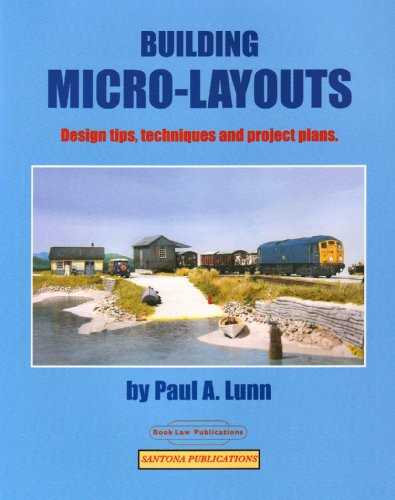Customer Services
Copyright © 2025 Desertcart Holdings Limited
Desert Online General Trading LLC
Dubai, United Arab Emirates


Building Micro-Layouts: Design Tips, Techniques and Project Plans
P**W
Ideas for small layouts with nice photos and illustrations
Excellent book on different styles of micro layouts for limited space.
S**N
Not quite as straightforward...
...if you copy the designs.Micro-layouts, those with 4 sq ft of surface area, are a niche but growing interest.With space at a premium and lofts too shallow and insulation filled the only option is for a layout to spend more time in store than use.Paul Lunn has an admirable track record in layout design and he is also a talented artist as the illustration in this small booklet reveal. Those who subscribe or purchase Model Rail will have seen many of his thoughts over the years.What has been revealed by use of rail design software is that some the designs presented will require the skill to build your own track as proprietary set track sections do not have the required shortness of flexibility to fit in with Pauls design, or has radii of less than 371mm: the tightest radius commercially available at the present time.I tried several times to get one micro within the dimensions declared and found that I needed point work with a 45 degree arc most commercial point-work is to 22.5, 12 or 8 degrees. Worse the point work needed a subtle curve. A major rework puts the design onto a baseboard of 1450 x 350 when the original design declared 660 x 300.One can see where Mr Lunn is aiming but several designs are well outside the Micro-Layout design brief even if his scenic areas fall inside the 1200 x 300 maximum dimensions.I like the book and my copy is well thumbed but it is not solely Micro centric. It is also heavily biased to OO operations with no thought given or even hinted at for those working either side of this popular scale. Modeller with long memories will recall that in the days of yore scaling grids were declared as:6" = N gauge =2mm/ft9" = TT = 3mm/ft12" = OO = 4mm/ft21" = O = 7mm/ftIt would therefore be possible to up or down scale a design to suit your chosen scale by the using these dimensions and multiplying by the number of grid squares of the plan. Simple and a way to ensure that the little railway you wish to work on will suit the space you have available.So tread carefully my friends
A**R
Lots of Examples
I bought this book because i will need a sall layout, if I ever build one. I enjoyed the book for its ideas and examples. Also a few cheats were shown to make more use of limited space and finally how to make the layout appear bigger than it is. Very good, useful book
J**Y
Small layouts
A good book for those who do not have very much room for a layout written by a well known author. It was bought to give me ideas but unfortunately there was no shelf layouts for myself but for others this might not be a problem.
I**H
A useful edition.
A useful edition and well produced.
C**E
Interesting reflexions on layouts. Clearly the concept of micro-layout ...
Interesting reflexions on layouts.Clearly the concept of micro-layout is very vague or being used indiscriminately. Learned the term with Carl Arendt's works and others on his famous site. Sadly realise that it is overused. To call a volume of 1200 long micro is outrageously farfetched.Nevertheless this book is among the ones I've been reading recently the one that gives some interesting contributes.
D**H
Interesting book
Some interesting ideas and great illustrations. Seems a little light in pages and priced on the higher side. A great idea though as micro layouts become more popular due to space, money and time constraints. If you are thinking of building a micro layout, this book will surprise you with what you can achieve in a small space.
A**R
Five Stars
as expected
Trustpilot
4 days ago
2 weeks ago